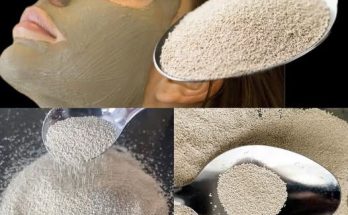How to Produce Homemade Lemongrass Oil: It’s easy and satisfying to make your own lemongrass oil at home. In addition to its well-known scent, lemongrass oil has other health advantages, such as reducing stress, enhancing digestion, and serving as a natural insect repellant. It’s excellent for hair and skin care as well. With a few simple items, you can create lemongrass oil at home.
What You Need:
- Five to six fresh lemongrass stems
- Carrier oil (like jojoba, coconut, or olive oil)
- A rolling pin or a mortar and pestle
- A dry, spotless glass jar with a tight-fitting lid
- Cheesecloth or a strainer
Detailed Instructions:
- Get the lemongrass ready: Wash the stalks: To begin, give the lemongrass stalks a thorough cleaning to get rid of any dirt or debris. Use a fresh towel to pat them dry.
- Crush the stalks: To extract the natural oils from the lemongrass stalks, crush them with a rolling pin or a mortar and pestle. Because the majority of the oil is contained at the base, pay close attention to damaging the stalks.
- Select the Carrier Oil: The optimum carrier oil for your intended purpose should be chosen. While olive oil is useful for aromatherapy or cooking, coconut or jojoba oils are excellent choices for skin and hair care.
- Fill your glass jar with enough oil to completely soak the lemongrass stalks. Usually, 5–6 lemongrass stalks use around 1 cup of oil.
- Pour the Oil in: Pour the carrier oil over the crushed lemongrass stalks in the glass jar, making sure the stalks are well submerged.
- To enable the lemongrass to infuse into the oil, tightly shut the jar and leave it in a warm, sunny location for 48 hours. To aid in the oil’s absorption of the lemongrass essence, shake the container every twelve hours.
- Heat (Optional) for a Stronger Infusion: You may slightly heat the oil mixture for a faster absorption. For approximately two hours, place the jar (with the lid on) in a saucepan of heated water or a double boiler; do not allow the water to boil. Infusion will proceed more quickly as a result. To keep the oil from overheating, make sure the heat is kept low.
- Remove the Oil Strain: After the infusion time, filter the oil to get rid of any debris and lemongrass stalks using cheesecloth or a sieve.
- To get as much oil out of the lemongrass as you can, squeeze the cheesecloth.
- Keep the Oil Stored: Transfer the filtered lemongrass oil into a glass bottle or jar that is dry and clean and has a tight-fitting lid. To keep the oil fresh, keep it somewhere cold and dark.
Homemade lemongrass oil can last up to six months if kept properly.
Lemongrass Oil Uses:
- Aromatherapy: To improve your mood, ease tension, and freshen up your environment, put the oil in a diffuser.
- Natural Insect Repellent: To ward off insects, particularly mosquitoes, dab a tiny bit over your skin or clothing.
- Skin care: To help lighten skin tone and lessen acne, include lemongrass oil into your moisturizer. It works well for skincare because of its antibacterial and antifungal qualities.
- Hair Care: To strengthen hair follicles, lessen dandruff, and encourage hair growth, use lemongrass oil with your shampoo or conditioner.
- Massage Oil: Apply it as a calming massage oil to ease pain and relax tight muscles.
- Cleaning: Lemongrass oil is a great natural cleanser for your home’s surfaces because of its antibacterial qualities.
Conclusion: A quick and affordable approach to take advantage of the many advantages of this revitalizing and adaptable oil is to make lemongrass oil at home. This homemade lemongrass oil will quickly become a mainstay in your wellness regimen, whether you use it for aromatherapy, skincare, or as a natural bug repellant.



